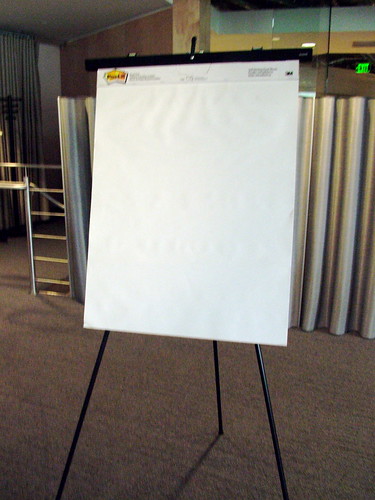 I have said it many, many times and so have lots of others—you’re probably tired of hearing about how social media is supposed to be “a conversation.” And that’s okay! Because it isn’t JUST a conversation! There’s calls to action, story telling, questions and requests, and much more. And, more importantly, some of the messages, the stories and the campaigns don’t even come from you! They come from your supporters.
I have said it many, many times and so have lots of others—you’re probably tired of hearing about how social media is supposed to be “a conversation.” And that’s okay! Because it isn’t JUST a conversation! There’s calls to action, story telling, questions and requests, and much more. And, more importantly, some of the messages, the stories and the campaigns don’t even come from you! They come from your supporters.
How can you create a strategy for your messages and campaigns in social media that respect this fact? Here’s how!
This process is great to do as a team or as an organization. If you have a room where everyone can sit, and an hour or two to bring everyone together, I really recommend you use this topic as an opportunity to hear what each department identifies and shares when working through the process below as the conversations that come up can be another chance to break down silos inside your organization!
On a flip chart or whiteboard (or if you are working through this by yourself, just use a piece of paper or a spread sheet on your computer) draw 4 vertical lines, creating 5 columns. You may want to turn the flip chart sideways or use separate sheets for each column.
#1: Who are “They”
This column is for identifying all of your audiences. Be sure to really consider this as there are probably many different groups, supporters, collaborators, or other audiences that you may not list right away! It’s a great opportunity to bring different departments together to create a complete view of the organization’s audiences.
#2: What we Want
This is where you can list actions, knowledge, messages or anything else you want to give to your audience or have them do. List these next to each audience group from the first column. Remember that there could be more than one What we Want item per audience.
#3: How it Happens
In column 3, list how you deliver these messages or requests. Are they online: in email, website, social media platforms (which ones?), etc. Are they offline: at events, in your office, elsewhere?
#4: What they Want
Now it’s time to list what your different audience groups want from you! Do they want information, support, value or recognition; maybe they want to be included, give feedback, share their stories or campaign on your behalf. Again, there can be more than one What they Want per audience group.
#5: How it Happens
Just like in column 3, this column lists how these requests or exchanges can happen.
Stand back!
You’ve just created a map of all your audiences and how you and all of them can be sharing, conversing and campaigning in an aligned way! The two “How it Happens” columns are great opportunities for evaluating which social media tools you are using for different audiences, something I’ve talked about on this blog before. You can also easily see which messages and audiences naturally go together and which are separate. And, if you did it as a team or full organization you can feel like you are all on the same page (or at least closer to it) by working through the process together!
What do you think?
How have you mapped your conversations and messages at your organization? Do you have any tips or suggestions you can share? I’d love to hear how you’ve done it!

What a useful approach, Amy! A way to bring system to sometimes chaos. It is so easy to be so caught up in just pushing stuff out that we forget about having a strategy. Thanks!
Thanks for joining in, Joanne! I completely agree with you: it isn’t that we don’t *want* a strategy; it’s that we “don’t have time” to be strategic. Hopefully simple exercises like this one can help people map and act strategically without having to make a huge time or effort commitment. It should be fun and valuable, after all!
I really like this post! I have been struggling with this exact topic-how to communicate best to all or ouf constituents- and I think this may work. I keep putting the cart before the horse in that I just forge ahead without planning and analyzing. I am going to do your process in our team meeting tomorrow and will let you know how it works. Thanks for the great idea!
Hi Joni-
Thanks so much for commenting here. I really can’t wait to hear how this goes and hope you’ll share some feedback about the process, how you worked through it (what kind of organization you have, who participated, what outcomes you came to, etc.) so that everyone reading can learn from you!
Hope to hear from you soon 🙂
I love your strategy! This process will definitely help us work on our conversation skills with all the groups we’re trying to serve. Thanks so much!